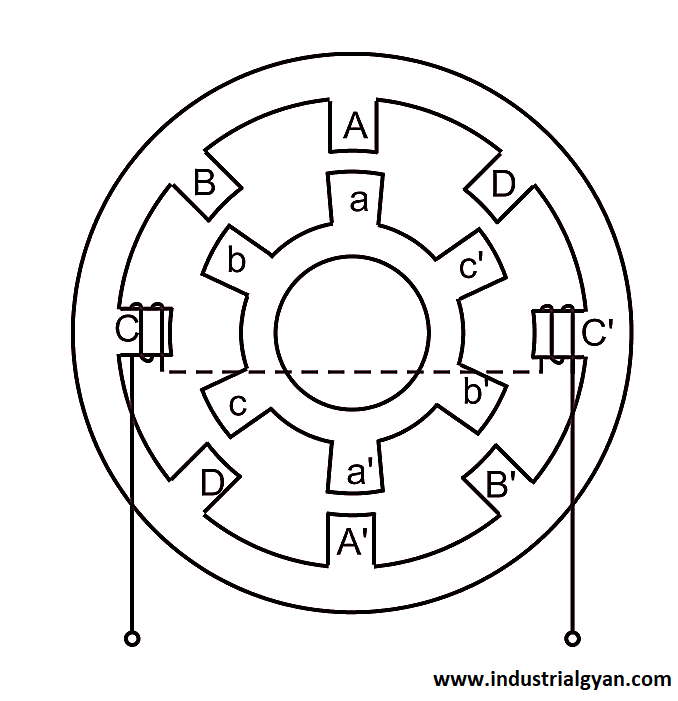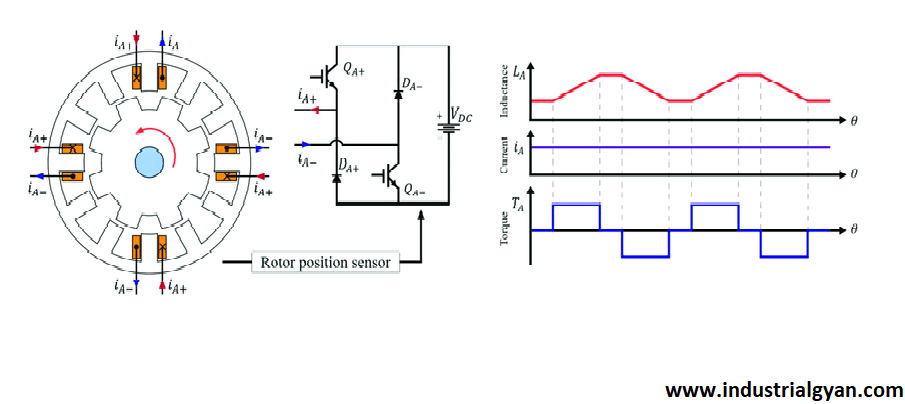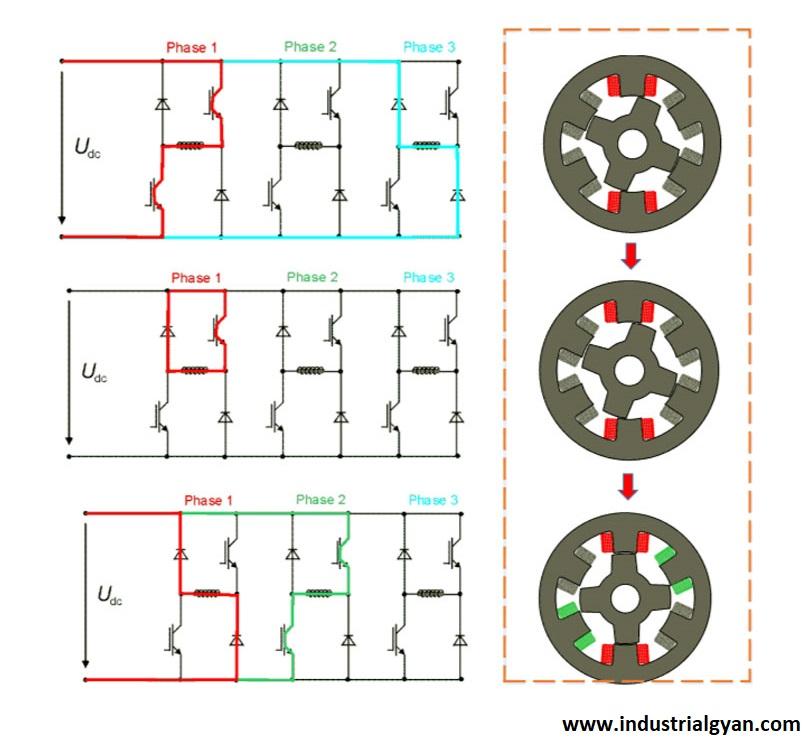Introduction
Electric motors are the workhorses of modern industrial and automotive applications. They power everything from household appliances to electric vehicles, making our lives more convenient and sustainable. One type of motor that has gained significant attention in recent years is the Switched Reluctance Motor (SRM). With its unique design and superior efficiency, the SRM offers a promising solution for a wide range of power conversion needs. In this article, we will explore the inner workings, advantages, and applications of the switched reluctance motor.
What is a Switched Reluctance Motor?
A Switched Reluctance Motor (SRM) is an electric motor that operates on the principle of magnetic reluctance. Unlike traditional motors that use permanent magnets or wound coils, SRMs rely on the variation in magnetic reluctance to generate torque. The key components of an SRM include a stator and a rotor, both of which have salient poles. The stator poles are energized sequentially to create a magnetic field that pulls the rotor towards alignment, resulting in rotational motion.

How Does a Switched Reluctance Motor Work?
When an SRM is energized, a sequence of electronic switches controls the current flow in the stator coils. This switching process creates alternating magnetic fields that attract the rotor poles toward alignment with the stator poles. As the rotor rotates, the electronic switches continue to control the stator current, stator and rotor optimizing the magnetic fields to maintain efficient torque production.
The rotor position is determined by sensors or advanced algorithms that monitor the phase of the stator currents and voltages. By precisely controlling the timing and duration of the current pulses, the SRM can achieve efficient torque generation over a wide range of operating conditions.

Advantages of Switched Reluctance Motors
Switched Reluctance Motors offer several advantages over traditional motor technologies. Let’s explore some of the key benefits:
1. High Efficiency
Switched Reluctance Motors have excellent efficiency characteristics due to their simplified construction and lack of permanent magnets. By eliminating the need for costly magnet materials, SRMs reduce production costs while maintaining high efficiency levels. Additionally, the absence of rotor windings minimizes copper losses, further enhancing the overall efficiency of the motor.
2. Robustness and Durability
The robust design of SRMs makes them ideal for demanding applications. Since there are no permanent magnets to demagnetize or windings to burn out, SRMs can withstand harsh environments, temperature variations, and mechanical shocks. This inherent durability translates into a longer lifespan and reduced maintenance requirements.
difference between short circuit and overloading
3. Wide Speed Range and Torque Control
SRMs excel in applications that require precise control over speed and torque. Due to their unique operating principle, SRMs offer a wide speed range and high torque density. With advanced control algorithms, it is possible to achieve accurate speed and torque regulation, making SRMs suitable for variable-speed drives and robotics applications.

4. Cost-Effective Solution
The simplified construction of SRMs, along with their robustness and high efficiency, contributes to a cost-effective solution for many industrial and automotive applications. The absence of rare-earth magnets reduces the dependency on costly materials, making SRMs an attractive option for manufacturers seeking affordable yet efficient motor solutions.
5. Enhanced Safety
Switched Reluctance Motors offer enhanced safety features compared to traditional motor types. As SRMs do not require permanent magnets, they eliminate the risk of magnet demagnetization, which can lead to safety hazards. Moreover, the absence of windings reduces the risk of electrical faults and associated fire hazards.
6. Environmentally Friendly
In today’s environmentally conscious world, the sustainability of electric motor technologies is of paramount importance. SRMs, with their high efficiency and reduced reliance on rare-earth magnets, contribute to a greener future. By minimizing energy losses and reducing the demand for rare-earth materials, SRMs help lower carbon footprints and promote sustainable practices.
Applications of Switched Reluctance Motors
Switched Reluctance Motors find applications in various industries and sectors. Let’s take a closer look at some of the key areas where SRMs excel:
1. Electric Vehicles
The automotive industry has embraced SRM technology as it offers significant advantages for electric and hybrid vehicles. The high torque density and wide speed range of SRMs makes them suitable for traction applications. With the ability to operate efficiently at varying speeds, SRMs contribute to extended driving ranges and improved energy efficiency in electric vehicles.
2. Industrial Automation
In industrial automation, precise control over speed and torque is critical. Switched Reluctance Motors, with their excellent torque control capabilities, find applications in robotics, machine tools, conveyor systems, and more. Their robustness, high efficiency, and wide speed range make SRMs an ideal choice for demanding automation tasks.
3. Appliances and HVAC Systems
Household appliances, such as washing machines, air conditioners, and refrigerators, benefit from the efficiency and reliability of SRMs. With their high torque output and ability to operate at variable speeds, SRMs improve the performance and energy efficiency of these appliances, reducing power consumption and enhancing user experience.
4. Renewable Energy Systems
Renewable energy systems, such as wind turbines and solar trackers, require motors that can efficiently convert energy into usable power. Switched Reluctance Motors, with their robust construction and high efficiency, offer an ideal solution for these applications. SRMs can withstand harsh environmental conditions, ensuring reliable operation in renewable energy systems.
5. Aerospace and Aviation
The aerospace and aviation industries demand motors that are lightweight, compact, and efficient. Switched Reluctance Motors, with their simplified construction and absence of permanent magnets, meet these requirements. SRMs find applications in aircraft actuators, fuel pumps, and other aerospace systems, contributing to improved efficiency and reduced weight.
6. Power Tools and Actuators
Switched Reluctance Motors also find applications in power tools, actuators, and other devices that require compact and efficient motor solutions. The high torque density and precise control characteristics of SRMs make them suitable for these applications, enabling improved performance and reliability.

Frequently Asked Questions (FAQs)
Q1: Are Switched Reluctance Motors more efficient than other motor types?
A1: Yes, Switched Reluctance Motors offer high efficiency due to their simplified construction and absence of permanent magnets. By eliminating costly materials and reducing copper losses, SRMs achieve excellent efficiency levels.
Q2: Can Switched Reluctance Motors operate at varying speeds?
A2: Absolutely! Switched Reluctance Motors Excel at variable speed applications. With advanced control algorithms, SRMs can maintain efficient torque generation over a wide speed range, making them suitable for diverse operating conditions.
Q3: Are Switched Reluctance Motors suitable for harsh environments?
A3: Yes, Switched Reluctance Motors are highly robust and durable. Their design eliminates the need for permanent magnets and windings, allowing them to withstand harsh environments, temperature variations, and mechanical shocks.
Q4: Do Switched Reluctance Motors contribute to a greener future?
A4: Absolutely! Switched Reluctance Motors offer high efficiency and reduce reliance on rare-earth magnets. By minimizing energy losses and promoting sustainable practices, SRMs contribute to a greener and more sustainable future.
Q5: Can Switched Reluctance Motors be used in electric vehicles?
A5: Yes, Switched Reluctance Motors find extensive applications in electric and hybrid vehicles. With their high torque density and wide speed range, SRMs contribute to improved performance, extended driving ranges, and enhanced energy efficiency.
Q6: Are Switched Reluctance Motors cost-effective?
A6: Yes, Switched Reluctance Motors provide a cost-effective motor solution. Their simplified construction and reduced reliance on costly materials make SRMs an attractive option for manufacturers seeking affordable yet efficient motor technologies.
Conclusion
Switched Reluctance Motors offer a compelling alternative to traditional motor technologies. With their high efficiency, robustness, precise control, and cost-effectiveness, SRMs are well-suited for a wide range of applications in various industries. Whether it’s electric vehicles, industrial automation, appliances, or renewable energy systems, SRMs provide an efficient and versatile solution for power conversion needs. As we continue to prioritize sustainability and energy efficiency, the switched reluctance motor emerges as a key player in shaping our electrified future.
You can follow us on Linkedin

I am a highly motivated and skilled individual with a passion for Electrical engineering. I have 1 year of experience in Robotics and Electrical engineering, which has allowed me to develop a strong set of skills in PLC, Painting Robots, SCADA. I am a quick learner and am always looking for new challenges and opportunities to expand my knowledge and skills. I am a team player and enjoy working with others to achieve a common goal. Successfully completed many projects for a various clients in the automobile sector.
Thank You
